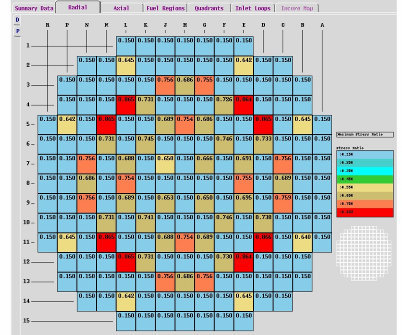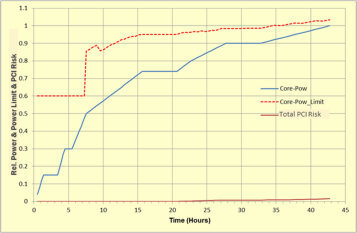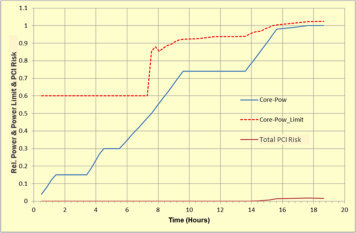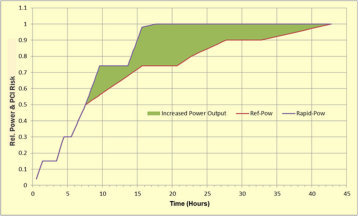Background
Pellet clad interaction (PCI) is a serious concern for operation of nuclear power plants under transient conditions such as those that occur during startup, temporary down power for maintenance activities, load follow or dropped rod recovery. Under these conditions, fuel failure can occur if the core is ramped too quickly. However, the definition of “too quickly” depends on fuel operating history; thus, if a single “rule of thumb” ramp rate is used it will be necessarily conservative and the plant will be delayed in getting maximum power on to the grid.
The Westinghouse Local Fuel Duty Risk Monitor (LFDRM) module performs detailed calculations of local ramp rate and power history, allowing an accurate assessment of PCI risk resulting in maximum megawatts on the grid for the given conditions.
Description

LFDRM Model in BEACON 7
The LFDRM module uses BEACON™ 7 core monitoring software by utilizing the calculated local power along with postulated missing pellet surface. This is used to calculate the risk of PCI as a function of time for a given operational maneuver. The continuous monitoring capabilities of BEACON 7 allow for the conditioned state of the cladding to be continually tracked. BEACON 7 and LFDRM may be used in a predictive mode to develop power ascension strategies that maintain PCI risk to acceptable levels, while not overly limiting the plant where risk is low. LFDRM can be used to evaluate a variety of expected plant condition, including dropped rod recovery.
Benefits
LFDRM offers many benefits to users including:
- Faster initial cycle startup resulting in a higher capacity factor
- Plan Flexible Power Operation (FPO) maneuvers that minimize PCI failure risk, including a faster return to full power after extended low power operation (ERPO)
- Explicit confirmation of very low PCI risk for a variety of unplanned power maneuvers
Deliverables
The LFDRM module is an add-on feature of BEACON 7 can be enabled for existing BEACON 7 users. The new functionality provides detailed BEACON output to enable the plant to calculate core-wide PCI risk associated with power maneuvers well in advance or in real time.
Experience
Westinghouse has experience using the LFDRM module to evaluate early reloads with suspected fuel failures caused by missing pellet surfaces. Spikes in the predicted failure risk using this methodology agree with the actual times of increased coolant activity, thus validating the predictive capability of the LFDRM method.

Ramp Rate Versus Calculated Limit Using Traditional Guidance

Improved Ramp Using Knowledge of the PCI Risk

Extra Power on the Grid with No Perceptible Increase in Risk





